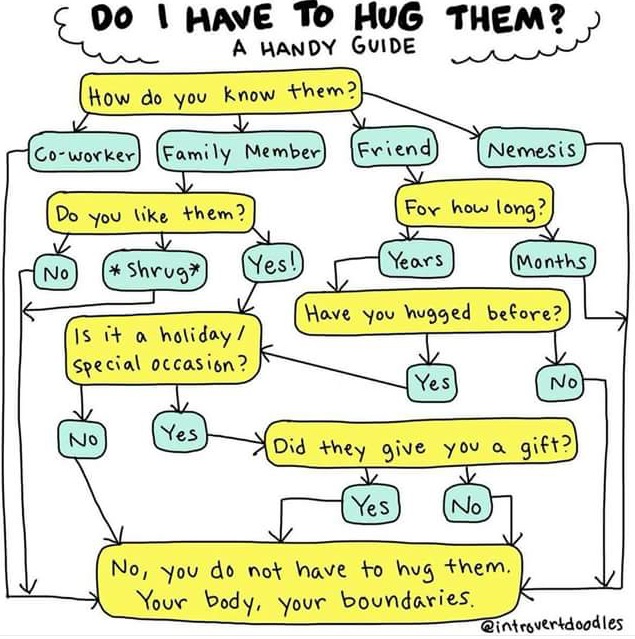I love this mem. Navigating social values and niceties as parents can be challenging.
We want to teach our children to be kind, considerate human beings. To say please and thank you, to show gratitude when someone does something for them, and to do kind things for others.
We also want to teach them to respect themselves and others. To see their strengths and talents, to feel confident in the world and in their bodies, and to be able to say no when they need to. Perhaps most of all, we want them to feel safe in the world.
Sometimes these two desires may feel like they conflict with one another.
Working with young girls around body confidence, self-esteem, and self-love, consent is something I feel strongly about. As the recent #Me, Too Movement has shown, our societal ideas around consent need some attention. Talking about it with each other and our families is a great place to start.
What does consent mean when it comes to our children?
Imagine the following:
- It’s your child’s birthday party and they just opened a present. How do you cue them to express their thanks? Do you give them options?
- You’re heading off to work and you want to say goodbye. Do you ask for a kiss and hug? If so, do you accept “no” if that is your child’s response or do you insist?
- A family member is playfully interacting with your child and says, “I’m going to steal a kiss!,” as your child tries to wiggle away. Do you say anything?
- Your child is saying, “no tickles,” while leaning towards you and looking at you out of the corner of their eye. The non-verbal cues seem to say the opposite of their words. Do you tickle them? Do you use this as a moment to talk about the power of Yes and No?
Studies state that non-verbal communication is somewhere between 80-93% of how we communicate. As the saying goes, actions speak louder than words. How we act in these and other similar situations teaches our children about consent and their bodies.
It is so important that we teach our children that their bodies are sacred and that they have the right to decide if they want to being touched or not. By doing so, we help lay the groundwork for our children to develop healthy boundaries, feel comfortable expressing their needs, and know being loved does not require saying yes every time. We also show them that no matter what someone does for us, or how much we want to make someone else happy, we always have the right to honor what feels comfortable for us and say no when we need to.
There are a lot of ways to start this conversation with your family. Starting with the word consent, what it means, and when it comes up is a great place to begin. It can be lighthearted, playful, and even silly. And it can also be very serious. Give your children permission to ask questions, practice these skills with you, and space to explore their own yes’s and no’s. Then when consent comes up in other situations, they will know they have options.

